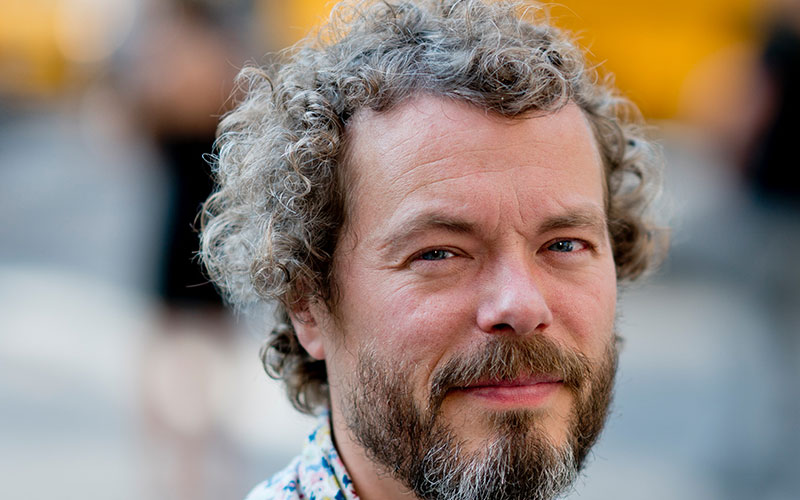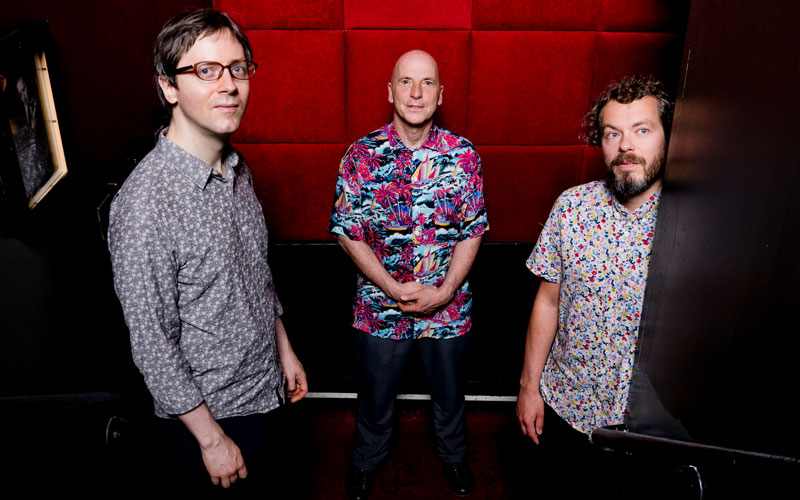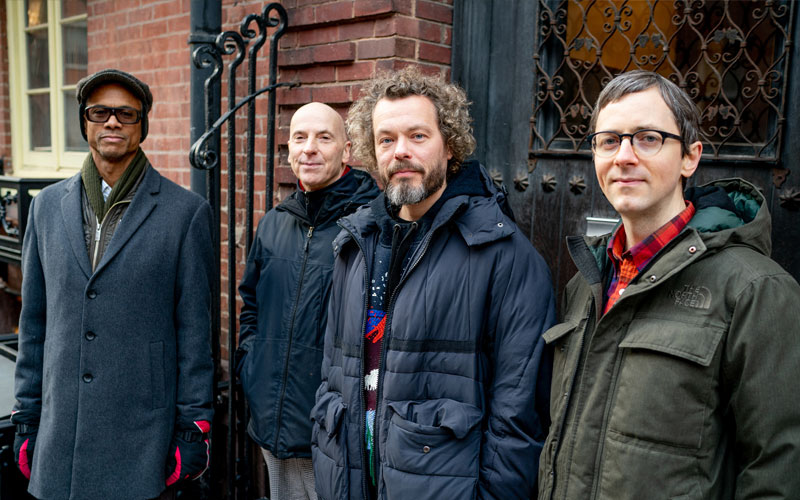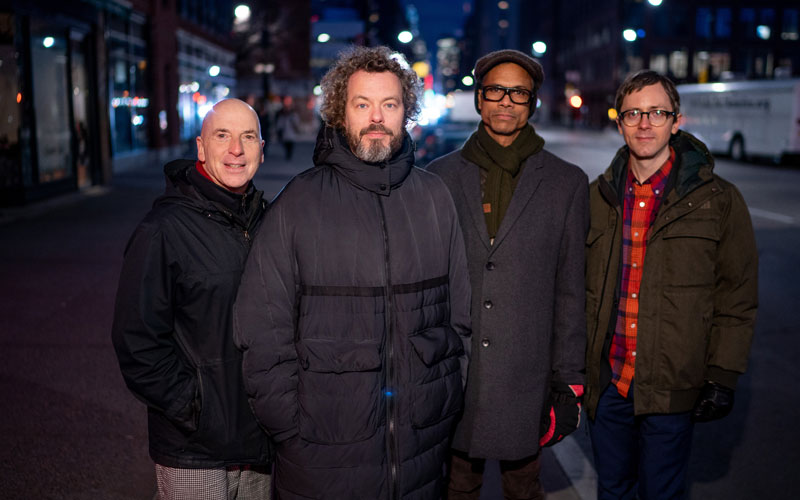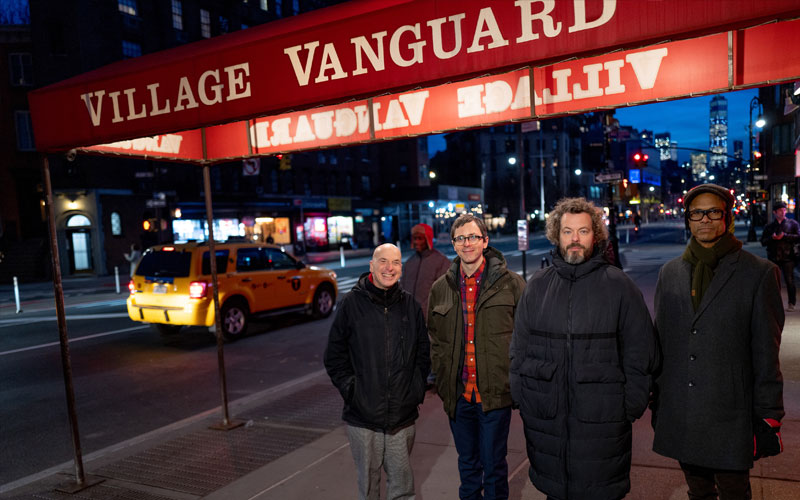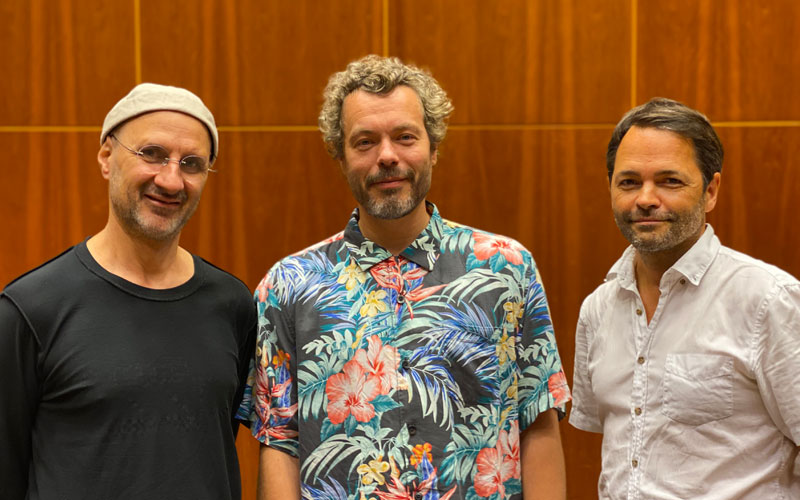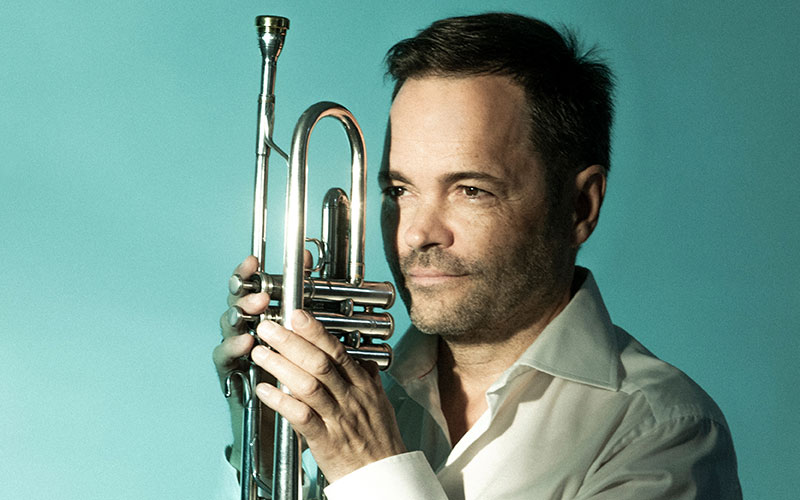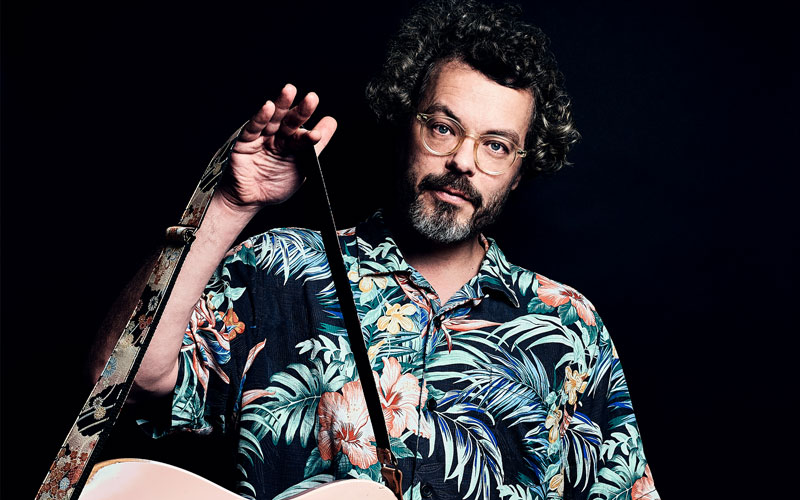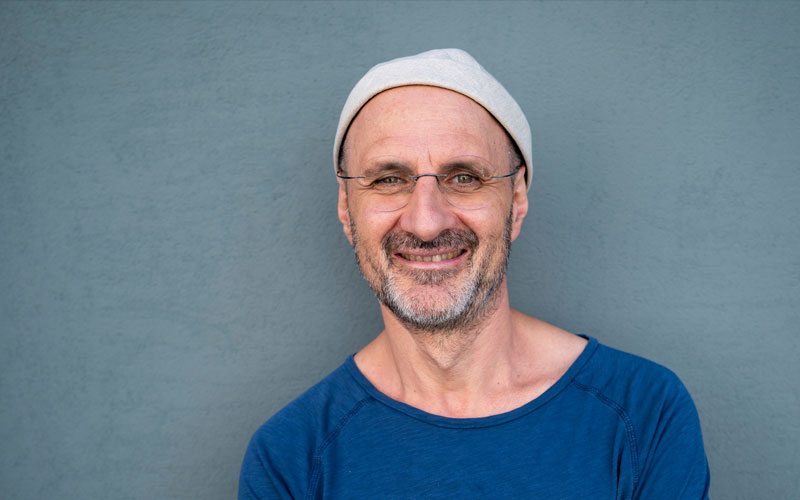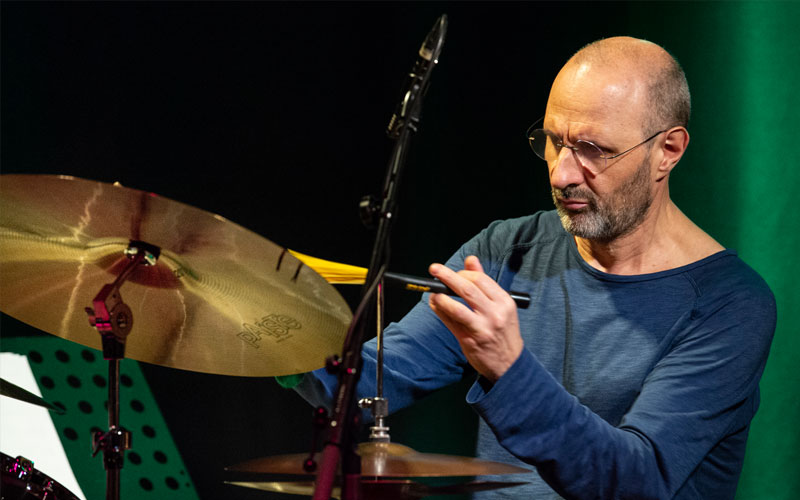Jakob Bro
Jakob Bro Trio
Thomas Morgan b
Joey Baron dr
Jakob Bro
Jakob Bro (1978) is a guitarist, composer and ECM recording artist based in Copenhagen, Denmark.
He is currently collaborating with Joe Lovano, Midori Takada, Brian Blade, Charles Lloyd, Ambrose Akinmusire, Marilyn Crispell, Wadada Leo Smith, Andrew Cyrille, Joey Baron, Thomas Morgan, Jorge Rossy, Larry Grenadier, Palle Mikkelborg, Marilyn Mazur, Nils Petter Molvær, Anders Christensen, Anja Lechner, Arve Henriksen and many more.
His output for ECM Records includes the deeply felt homage Once Around the Room: A Tribute to Paul Motian (2022) co-lead by Joe Lovano and other highly acclaimed albums such as Uma Elmo (2021) with Arve Henriksen and Jorge Rossy; Returnings (2018) with Palle Mikkelborg, Thomas Morgan and Jon Christensen; and the trio albums Bay of Rainbows (2018), Streams (2017) and Gefion (2016). Bro has won the DownBeat Critics Poll in the Rising Star Guitarist category and received numerous honors including the Carl Prize, the Danish Music Award, the Danish Arts Foundation Award and a nomination for the Nordic Council Music Prize for the trilogy: Balladeering (2009), Time (2011) & December Song (2013).
Jakob Bro is a former member of Paul Motian & The Electric Bebop Band (Garden of Eden, ECM – 2006) and of Tomasz Stanko’s Dark Eyes Quintet (Dark Eyes, ECM – 2009).
He has released 16 records as a bandleader including musicians like Lee Konitz, Bill Frisell, Paul Motian, Kenny Wheeler, Paul Bley, Chris Cheek, Thomas Morgan, Ben Street, Mark Turner, Kurt Rosenwinkel, Andrew D’Angelo, Chris Speed, George Garzone, Craig Taborn, Oscar Noriega, David Virelles, Jon Christensen, Jesper Zeuthen, Anders Christensen, Peter Laugesen, Kresten Osgood, Jakob Høyer, Nicolai Munch-Hansen, Jonas Westergaard, Søren Kjærgaard, Nikolaj Torp Larsen and many more.
His worldwide touring activities extend to venues and festivals across Japan, China, South Korea, Greenland, Australia, Brazil, Argentina, Columbia, South Africa, USA and most of Europe.
Jakob Bro’s music and various ensembles are depicted in the film “Music for Black Pigeons” (directed by Jørgen Leth and Andreas Koefoed), which premiered at the 79th Venice Biennale in 2022.
Awards and Recognitions
- 2022: Official Selection of the 79th Venice Film Festival + winner MUSE Cinema & Arts Award (for Music For Black Pigeons)
• 2018: Downbeats 66th Annual Critics Poll winner “Rising Star Guitar”
• 2016: The Carl Prize – Jazz Composer of the Year (for the album Gefion)
• 2015: Danish Music Award – Danish Jazz Album of the Year (for the album Gefion)
• 2014: Nomination – The Nordic Council Music Prize (for Balladeering/Time/December Song)
• 2013: The Carl Prize – Jazz Composer of the Year (for the album Bro/Knak)
• 2013: Danish Music Award – Danish Crossover Album of the Year (for the album Bro/Knak)
• 2013: Jazz Special Prize – Danish Jazz Album of the Year (for the album December Song)
• 2013: The Jazznyt Prize (for the album December Song)
• 2012: DJBFA’s honorary award (from the organisation Danish Jazz, Beat and Folk Authors)
• 2012: The Danish Arts Foundation reward (for the album Bro/Knak)
• 2010: Danish Music Award – Danish Jazz Album of the Year (for the album Balladeering)
• 2009: Jazz Special Prize – Danish Jazz Album of the Year (for the album Balladeering)
• 2007: The Danish Arts Foundation reward (for the album Pearl River)
• 2006: Danish Music Award – Danish Jazz Album of the Year (for the album Sidetracked)
• 2006: Danish Music Award – Danish Crossover Album of the Year (for Sidetracked)
• 2003: Danish Music Award – New Danish Jazz Artist of the Year (for Beautiful Day)
http://player.ecmrecords.com/bro-2381
https://www.youtube.com/watch?v=snzDFxOBKHk
Actual project:
Jakob Bro Trio
Uma Elmo
Jakob Bro: guitar
Arve Henriksen: trumpet, piccolo trumpet
Jorge Rossy: drums
https://www.youtube.com/watch?v=ws23vBPgs4g&list=RDws23vBPgs4g&start_radio=1&rv=ws23vBPgs4g&t=39
ECM 2702 CD: 60243528227 5 Release date: February 12, 2021
With Uma Elmo, his fifth album as a leader for ECM, Danish guitarist-composer Jakob Bro presents a new trio featuring Norwegian trumpeter Arve Henriksen and Spanish drummer Jorge Rossy. Astonishingly, given the trio’s musical synergy, the first time these three musicians ever performed together was for the album’s sessions at the Swiss Radio studio in Lugano, with Manfred Eicher producing. London Jazz New writes about Bro’s work: “there is no hurry to this music, but there is great depth.”
“To Stanko” is Bro’s hushed tribute to the late, great Polish trumpeter who featured the guitarist in his quintet for the ECM album Dark Eyes. Another track that serves as an homage to a late elder is “Music for Black Pigeons,” which was given its evocative title by saxophone sage Lee Konitz, with whom Bro also worked closely.
Listeners will recognize Arve Henriksen’s whispering, intimate sound from his 2008 ECM album Cartography, as well as from his collaborations for the label with Trio Mediaeval and Tigran Hamasyan. Rossy is well known to jazz fans on both sides of the Atlantic, particularly for his decade-plus tenure in Brad Mehldau’s career-making first trio. As for the leader, DownBeataptly noted in its review of his previous ECM album, Bay of Rainbows, that “Bro’s guitar is luminous… his music both hypnotic and dramatic.”
Bro created the title of his new album Uma Elmo using the middle names of his young daughter and infant son, with the guitarist having composed much of the album’s dulcet material between his newborn son’s naps. “It’s a special time in my life right now with the kids being so young – and it’s also a strange time in the world, of course,” Bro says. “I wrote music for the recording session being doubtful that we could actually all meet and complete the session, at the end of summer this past year, with a German producer, Spanish drummer, Sweden-based Norwegian trumpeter, Danish guitarist-composer and an Italian engineer – all in a studio in Switzerland.And the music is, as it always is, a reflection, more or less abstract, of what’s going on around us. To have this musical document from this year will always represent some kind of milestone for me. And to have everyone there in Lugano: Manfred, Jorge, Arve and engineer Stefano Amerio, all determined to shape and capture this music with me despite the many obstacles facing us – needless to say, I’m very grateful.”
Throughout Uma Elmo, Henriksen most often takes the melodic lead in Bro’s compositions, hovering and moving serpentine through Rossy’s subtly dynamic rhythms and the guitarist’s harmonic shimmers, tolling lines and looped atmospherics. About his trio mates, Bro says: “I performed with Jorge Rossy a few times before the Uma Elmo session, including a tribute concert for Paul Motian during the Copenhagen Jazz Festival in 2014 and then at the ECM50 event in Warsaw. But I admired Jorge from the first time I heard him, back in 1997 or so. He was on many albums with musicians I loved, like Chris Cheek, Mark Turner, Larry Grenadier, Ethan Iverson, Kurt Rosenwinkel and, of course, Brad Mehldau. Jorge has a deep understanding of time and form. He can be there inside the music, with everything around him moving, and just be present, not do too much, playing exactly enough, adding warmth, drive, contrasts, color, time, swing, soul. He also has a great sense of composition within the composition itself – making the music breathe.”
Bro first took note of Henriksen in 2016. “Arve’s sound struck me immediately,” he says, “and I soon began talking with him about a collaboration. But the session in Lugano was not only the first time we played music together – it was also my first actual physical encounter with him! It turned out to be an inspirational meeting. But it was invaluable to have Manfred on the side, listening, advising and guiding, especially since the three of us were coming together for the first time.”
Reflecting on the track “To Stanko,” Bro says: “I wrote the song to celebrate the life and sound of my friend Tomasz Stanko, in whose band I recorded and toured worldwide for more than five years. Stanko was such a soulful musician. For me, the mystery of music, why some sounds move me, is an essential part of my continued curiosity in playing. With Stanko, it was so evident. With one note, he told his story. When life pours out of an instrument, you’ve reached the ultimate, in my opinion. Arve plays beautifully on my tribute, ‘To Stanko.’ Tomasz would never play or sound like this – which, to me, just makes the dedication even stronger, emphasizing the fact that the inspiration from Stanko goes way deeper than anything you can define.”
Regarding “Reconstructing a Dream,” Bro recalls learning to re-contextualize his repertoire from Paul Motian’s example. “Performing at the Village Vanguard with Paul and also recording his ECM album Garden of Eden, we worked with such pieces as ‘Etude,’ ‘Mumbo Jumbo,’ etc. – songs Paul had composed for his earlier groups,” the guitarist explains. “Having listened to all of Paul’s recordings, knowing his songbook so well, it was an out-of-this-world experience for me to reimagine this music with him. So, having recorded ‘Reconstructing a Dream’ 13 years ago in New York with Paul for one of my albums, it felt like time to reinterpret this song. And with Jorge on drums this time. Jorge, to me, is a beautiful, warm, poetic drummer. I’m sure Paul would approve. ‘Slaraffenland’ is another track on Uma Elmo associated with Paul for me, because he included this tune of mine in the repertoire for a tour with the Electric Bebop Band when I was quite young.”
Concerning past heroes and new lives, entrancing sounds and pensive circumstances, Uma Elmo conjures an aura that lingers even after the notes fade from the air. With the aforementioned tracks as well as “Beautiful Day,” “Sound Flower,” “Housework” and two versions of “Morning Song,” Bro and company have created something of enduring value in strange times.
Jakob Bro Quartet feat. Mark Turner
Jakob Bro git
Mark Turner sax
Thomas Morgan b
Jorge Rossy dr
“Much of my music is constructed around melodies. My compositions are almost like a song. But within the frame I set up with a melody, a lot of things can happen. New layers of music are constantly added to the vocabulary, and when you play, you unconsciously get to a new place.” Jakob Bro was born in Denmark in 1978. His father had a big band in which Bro began playing tambourine before he could even walk. Later, he switched from trumpet to guitar after discovering the music of Jimi Hendrix. He went on to study at Denmark’s Royal Academy of Music, Boston’s Berklee School and the New School in New York. Bro is a former member of Paul Motian’s Electric Bebop Band and continues to play with the Tomasz Stanko Quintet alongside his projects as band leader. His own albums to date have featured an exceptional roster of musicians, including Lee Konitz, Bill Frisell, Paul Motian, Kenny Wheeler, Paul Bley, Chris Cheek, Thomas Morgan, Ben Street, Mark Turner, Craig Taborn, Kurt Rosenwinkel, Andrew D’Angelo, Chris Speed, George Garzone, Oscar Noriega, David Virelles and others. Bro made his first ECM appearance as a member of drummer Paul Motian’s twin-sax/triple-guitar band on the late drummer’s Garden of Eden(2006). Three years later he returned, this time as a member of Tomasz Stanko’s trans-European quintet on Dark Eyes. Finally, in 2015, the label released Gefion, Bro’s warmly received debut as leader of a trio featuring Californian bassist Thomas Morgan and the legendary Jon Christensen on drums. Mike Gates of UK Vibepraised the trio’s “landscapes of sound that are achingly beautiful, sparse, yet full bodied at the same time”. Of his trio work, Bro himself has said: “The trio has been the constellation that has allowed me to focus on my solo voice. It’s an expression where I feel nothing is missing.”
One year after Gefion the album „Streams“ followed, this time with Joey Baronas new drummer. From that moment Jakob Bro is worldwide touring with his band:From Japan and Süd Korea through the USA and Canada, Ukraine, in Palestine and of cause in all European countries.„Returnings“ followed in 2018, this time as Quartet with trompet player Palle Mikkelborg. This band played at Jazz Baltica Festival, at Vossa Jazz in Norway, at Ystad Festival in Sweden and also at the Frankfurter Jazzfestival in 2019. His Trio album „Bai of Rainbows“ recorded live in New York has also been released in 2018. In 2020 Jakob Bro expanded his trio with the American saxophonist Mark Turner. This quartet was heard for the first time in the legendary Montmartre in Copenhagen, followed by a one-week engagement in the Mecca of jazz at the end of January: in New York’s Village Venguard, where the band will also be a guest in July 2022.In 2021, Bro released another highly acclaimed album „Uma Elmo“ with the Norwegian trumpeter Arve Henriksen and Jorge Rossy on drums, which was voted the best album of 2021 by the renowned US American magazine Downbeat.A European tour in spring with the trio 2022 followed, further dates are planned for autumn with a trio around Larry Grenadier and Jorge Rossy.Jakob Bro is now planning a new edition of his quartet with Mark Turner for spring 2023.
Mark Turner
In a career that spans two decades and encompasses a broad array of musical ventures, saxophonist Mark Turner has emerged as a towering presence in the jazz community. With a distinctive, personal tone, singular improvisational skills and an innovative, challenging compositional approach, he has earned a far-reaching reputation as one of jazzs most original and influential musical forces.
2013 finds Turner entering an exciting new creative phase, with his varied talents showcased on a variety of notable new recording projects. Later this year, hell release his sixth album as a leader—his first under his own name in a dozen years. Hes also featured on new or upcoming releases by pianist Stefano Bollani, guitarist Gilad Hekselman, pianist Baptiste Trotignon and the Billy Hart Quartet, of which Turners been a member for nearly a decade and with whom he recorded two previous albums. Hes also continuing his work as a member , a collaborative trio with bassist Larry Grenadier and drummer Jeff Ballard.
Those projects add to an already expansive body of work that encompasses Turners own widely acclaimed albums and an assortment of collaborations, along with his prolific work as an in-demand sideman. Turners diverse discography includes collaborations with many of jazzs leading lights, including Kurt Rosenwinkel, Lee Konitz, James Moody, Dave Holland, Joshua Redman, Delfeayo Marsalis, Brad Mehldau, Reid Anderson, Omer Avital, Diego Barber, David Binney, Brian Blade, Seamus Blake, Chris Cheek, George Colligan, Gary Foster, Jon Gordon, Aaron Goldberg, Ethan Iverson, Jonny King, Ryan Kisor, Guillermo Klein, Matthias Lupri, OAM Trio, Mikkel Ploug, Enrico Rava, Jochen Rueckert, Jaleel Shaw, Edward Simon and the SF Jazz Collective.
Born in 1965 in Ohio and raised in Southern California, Turner grew up surrounded by music of There was always a lot of R&B and jazz and soul and gospel going on in the house all the time, he recalls. This was in the early 70s, when the whole integration and civil rights thing had begun to go mainstream, and my mother and stepfather were in the first wave of young black professionals and intellectuals who moved to upper-middle-class white neighborhoods. They and their friends were always going out to see live jazz. I was intrigued by that, and I was intrigued by the whole history of jazz music and African-American culture, as well as the music itself. And my father, who died when I was one and a half, had played saxophone, so maybe I was looking for a connection with him too.
After starting out on clarinet in elementary school, Turner gravitated towards saxophone in high school, while also exploring his talent for the visual arts. Although he briefly studied design and illustration at Long Beach State University, his passion for jazz ultimately led him to pursue a career in music. Turners meticulous, analytical work ethic led him to study and dissect the work of such saxophone giants as John Coltrane, Joe Henderson, Dexter Gordon, Sonny Rollins, Warne Marsh and Lester Young in the pursuit his own musical voice.
I really got into it and worked really hard, just trying to figure out who I am, he says, adding, Thats how I am with everything. It took a while, and it was kind of an arduous struggle, but it allowed me to figure out what I wanted from music. Even when I was spending my time sounding like other people, I felt like that was part of my path to sounding like myself. The more you spend time with the form and the language, the more your own personality comes out.
After graduating from Bostons prestigious Berklee College of Music in 1990, Turner moved to New York, where his rapidly developing talents were quickly recognized. Between 1995 and 2001, he recorded five albums of his own—Yam Yam, Mark Turner, In This World, Ballad Session and Dharma Days—while keeping busy as a sought-after collaborator and sideman.
It was around 1992 that I began to notice or feel that what I was doing was uniquely mine, Turner asserts. It had been two and a half years of struggle, but the summer of 1992 was the period where I was finally able to hear it. Maybe no one else would notice, but thats where I could see how things were gonna go.
Despite his growing reputation and influence, Turner intentionally pulled back from working as a leader after 2001s Dharma Days, focusing much of his energy on parenthood while channeling his creativity into numerous collaborative projects.
The last record I made was right when our first child was born, and that had a lot to do with me pulling back from being a leader for awhile, Turner states, explaining, Being a leader is so intense and you really have to put your whole self into it, and I just felt like I wanted to be there for my kids. When youre a leader, youre carrying a lot of weight and responsible for a lot of things that have nothing with music. Being a sideman, you basically just have to worry about being there and doing a good job. But my kids are 10 and 13 now, so its a little less demanding and Ive got more room now to do more things that I feel strongly about.
Of his forthcoming album, a quartet effort with Avishai Cohen on trumpet, Joe Martin on bass and Marcus Gilmore on drums, Turner notes, I spent a lot of time on the compositions, which I usually do. The blowing is important, but I dont think about that when Im writing. I just write the tune, and then we see if we can improvise on it or not. Some of the new tunes are long and kind of involved, and some of them are kind of my version of being pyrotechnical. I just wanted to explore, and I wanted to be able to go in there with a band that would be flexible and have the craftsmanship and the foundation to play something difficult and still make it sound musical.
Despite his long-awaited return to recording as a leader, Turner still values his collaborative work and has no plans to cut back on it.
I would never want to solely be a leader, and if someone handed me the chance to do that, Id say no, he says. I like to interpret other peoples music. I learn from doing that, and its a big part of what Ive become as a musician. In the situations where Im the leader and writing the music, its a combination of everything Ive heard and everything Ive done,. The way that I write and the way that I play and the bands that I bring together are all a representation of all of the musical situations that Ive been in, and Id never want to give that up.
With an impressive musical history already under his belt and more on the way, Mark Turner is clearly on the verge of a creative renaissance. As The New York Times noted, His best work is clearly still ahead of him.

